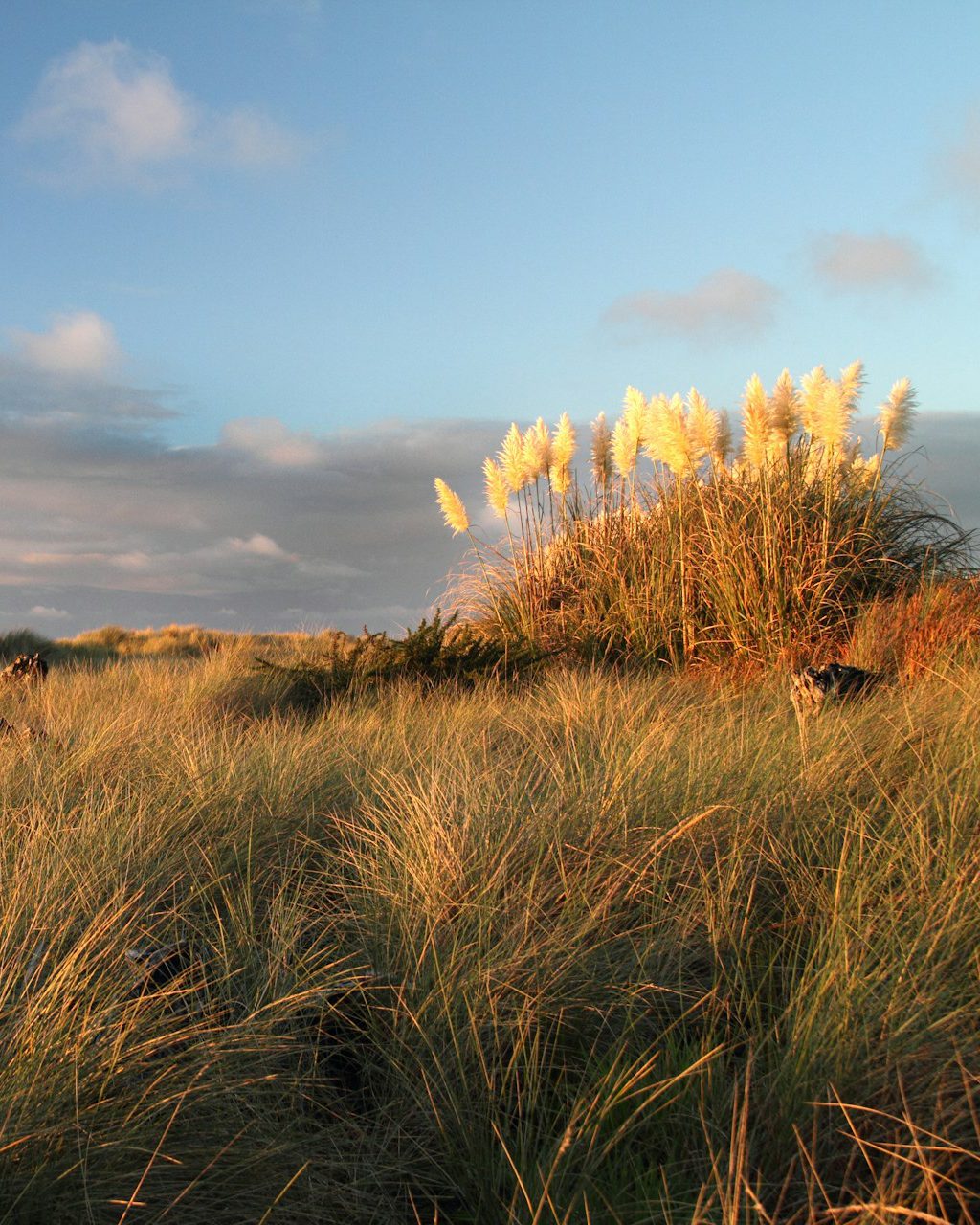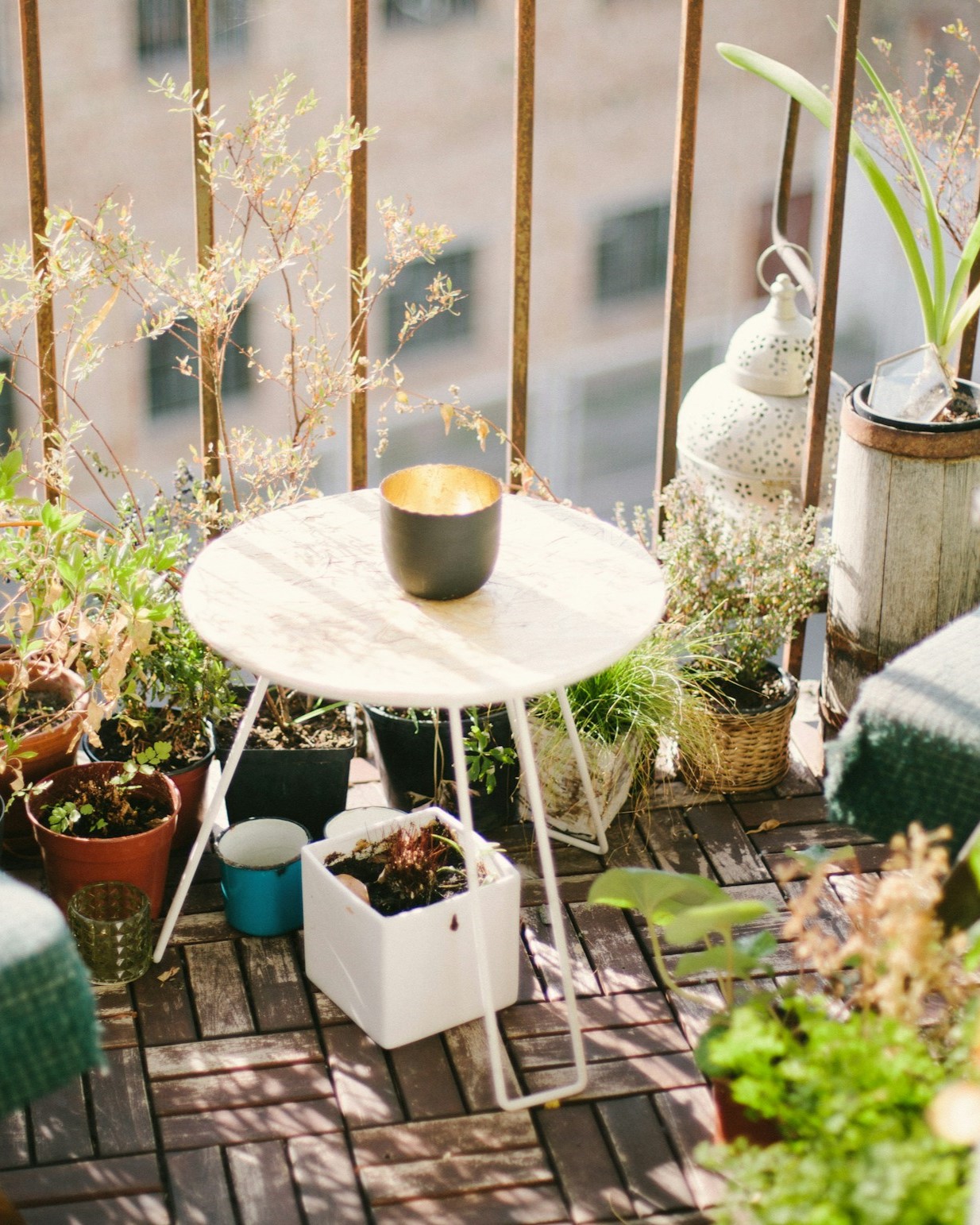
Eleanor Clarke
GARDEN DESIGN
How to create a pet-friendly garden
Whether you’re a dog or a cat person, we all want to keep our pets happy and safe, indoors and out. When there’s a garden to consider, perhaps one you’ve recently moved into or a space you’re renovating to make it more pet friendly, there’s plenty to consider, learn and take into account.
A Cat’s World
If it’s cats you’re thinking about, let’s get one thing straight from the outset. Most are pretty fussy eaters. So while the results of Googling ‘poisonous plants for cats’ might throw up a terrifyingly long list, take a breath before digging up your entire garden. Daffodil bulbs are known to be highly toxic to cats, but how likely is it that your cat digs one up and takes a bite? Be careful, but use your common sense and your knowledge of your own cat’s character. The petals and leaves are less toxic, but would still give a cat an upset stomach if eaten.
Bear in mind, too, that you can dig out all the potential hazards and fill your borders with the most cat-friendly plants and Mogs will just high-tail it next door. Or a few doors down. In fact, their space extends way beyond your fences, with most cats roaming an average of 40-200 metres from home, either looking for mice or simply checking out their territory.

Photo – Nick Night
If you want to encourage them to hang around home territory, there are a few things cats love:
- Grass
A lawn is great for cats as they love to lounge and roll in it. More importantly, perhaps, chewing on a blade or two and vomiting after helps them to naturally get rid of any fur and parasites in their digestive system. Just don’t use pesticides or weed killers on your lawn, for obvious reasons. If you don’t have a lawn, it’s worth planting a little pot of grass for them to chew on.
- Catnip or catmint
The two plants are part of the same family, and cats love them both. True catnip just isn’t as pretty, with duller flowers and a more sprawling habit. Both contain nepetalactone, which is what cats love (it’s similar in structure to a feline pheromone), so plant something like Nepeta racemosa ‘Walker’s Low’, which has lovely lavender-blue summer flowers. Or, if you have the space, Nepeta faasenii ‘Six Hills Giant’, a taller version. And prepare for them to be adored to oblivion (or at least to a good flattening!)
- Undergrowth & shrubs
Cats love to snooze and keep watch under shrubs or in the long grass, especially in summer when the earth is cool there in the shade. Let your garden grow and they’ll love it.
- A perch high up
Cats love to survey their territory from on high, where they can see possible intruders from a distance. They might climb a tree, sit on a fence or perch on an outbuilding.
If you’re planting up a new garden, or introducing cats to your current space, PDSA has a helpful list of plants to avoid. The one we’d underline is lilies.
It’s the pollen that’s poisonous, and this can easily land on cats’ fur and end up in their gut from grooming. Avoid, indoors and out.

Photo – Nick Peeters
Designing for dogs
Getting a garden just right for dogs is a whole different ball game. Keeping them safe and entertained is that little bit trickier, especially when they’re young and into everything. As well as dog-friendly plants to consider, there’s danger from roads to minimise, as well as the selection of plants that are robust enough to withstand the exuberance of an excited pup.
First up, boundaries. If there’s any danger of your dog escaping onto a busy road, you’ll need tall, sturdy fences, or at least tough, impenetrable hedges. Give some thought, too, to what’s underfoot and, if you can, choose hard paving and paths rather than lawn. It’s easier to keep clean, they won’t dig it up and it helps to keep their claws in shape, saving time on clipping. Try a mixture of paving and compressed hardcore/self-binding gravel for a softer, more natural look than 100% slabs. We wouldn’t recommend standard gravel as it invites digging, is swallowed easily by excitable dogs and can quickly become little more than a dog toilet that’s hard to clean.
In an ideal world, your path would lead to a dedicated play area that also has hard landscaping under the paws – somewhere they’re not distracted by too many flowers and plants. Take their toys there and they’ll soon learn that this is their space. If you can, create a special digging area alongside it using bark or sand.

Photo – Minnie Zhou
Unlike cats, dogs are much more likely to chew on plants. So your choice of shrubs, perennials and trees is important:
- Choose mature specimens that are more likely to withstand a bit of interest, and make sure they’re not going to make your dog ill.
- Turf out anything toxic. The Kennel Club has a helpful list of toxic plants. Some of the worst and most commonly found include daffodil bulbs, foxgloves, daylilies, nightshade, yew, wisteria and rhubarb leaves.
- Provide stimulation. Plants that are fun for dogs include tall, swaying ornamental grasses such as Miscanthus, robust scented lavenders and catmint (Nepeta), honey-perfumed buddleias, and the fun plumes of astilbes.
- Use tough shrubs as the backdrop to your perennials. Viburnums, camellias and roses are all great.
- Don’t forget trees and climbers. They’re harder for dogs to damage, so look to them to prettify your garden. Star jasmine (Trachelospermum jasminoides) will provide weeks of scent over a fence, while small trees such as magnolias and amelanchiers bring seasonal colour above head height.
Finally, for a garden that’s safe not only for your pets but all the creatures you share it with, remember to garden organically, without pesticides or weed killers.
While we strive to provide accurate and up-to-date advice, it’s important to note every pet is different, and what may be safe for one pet could be harmful to another. Before implementing any gardening tips or introducing new plants to your garden, you can consult with your veterinarian or a qualified professional to ensure they are safe for your specific pets


